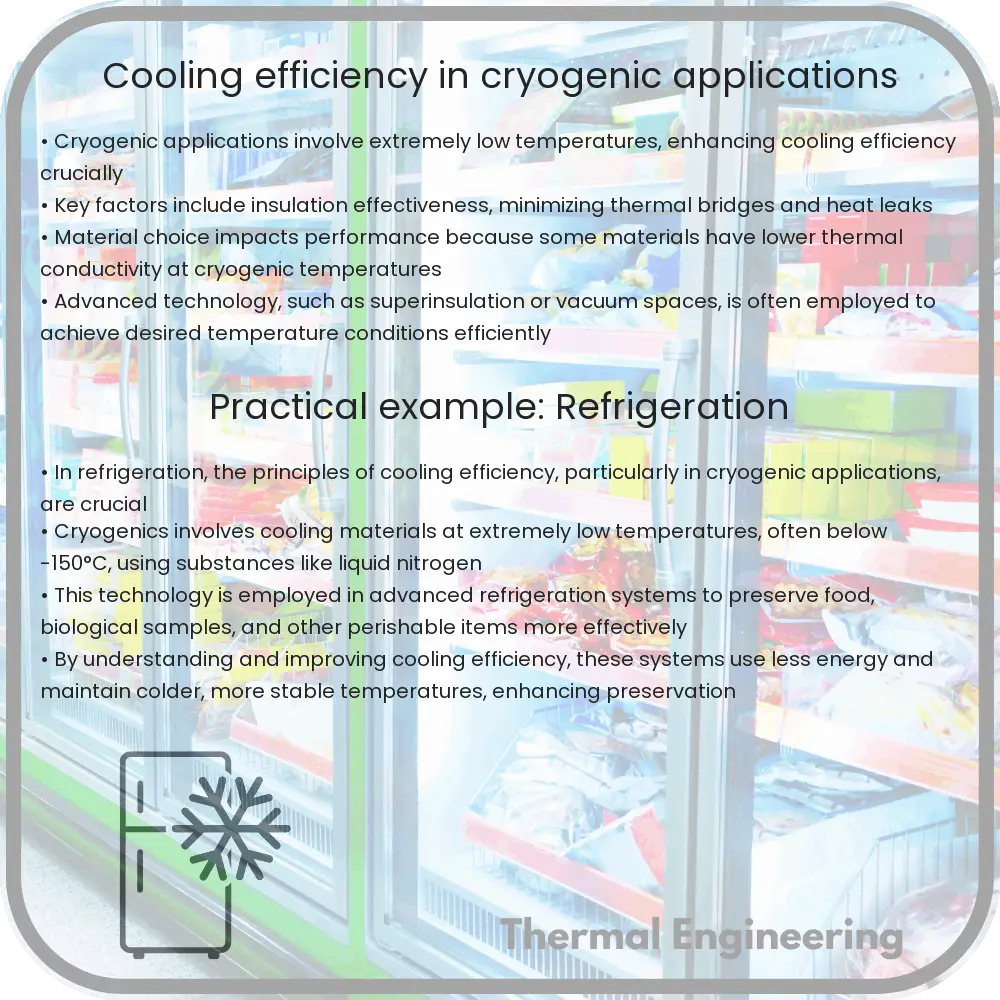Explore the principles, technologies, and factors influencing cooling efficiency in cryogenic applications across various industries.

Understanding Cooling Efficiency in Cryogenic Applications
Cryogenics is a branch of engineering that involves the production and behavior of materials at extremely low temperatures, typically below -150 degrees Celsius (-238 degrees Fahrenheit). It plays a crucial role in various industries, from the storage of biological materials in medicine to the liquefaction of gases in the aerospace sector. One of the core aspects of cryogenics is its cooling efficiency, which is the effectiveness with which a system can reach and maintain these low temperatures. In this article, we will explore the principles of cooling efficiency in cryogenic applications, the technologies used, and the factors that affect performance.
Basic Principles of Cryogenic Cooling
Cryogenic cooling typically begins with a refrigeration process, where heat is absorbed from a substance to lower its temperature. One common method is through the Joule-Thomson effect, where a gas is expanded, leading to a drop in temperature. This principle is utilized in many cryocoolers and gas liquefiers. Another principle used is adiabatic demagnetization, used primarily to reach microkelvin temperatures, which utilizes the magnetic properties of materials rather than their gaseous state.
Key Technologies Used in Cryogenic Cooling
- Gifford-McMahon Cryocoolers: Often used in commercial applications requiring temperatures from 10 K to 120 K. They work by cyclically compressing and expanding a regenerative material, typically lead, while strategically controlling the movement of a displacer.
- Pulse Tube Cryocoolers: Similar to Gifford-McMahon, pulse tube cryocoolers eliminate the need for mechanical displacers by using an oscillating pressure wave within a pulse tube to produce cooling.
- Dilution Refrigerators: Critical for achieving temperatures below 10 mK, these systems use a mix of helium-3 and helium-4 isotopes to exploit the heat of mixing effects at low temperatures.
Factors Affecting Cooling Efficiency
- Ambient Temperature: The efficiency of cryogenic systems often depends on the surrounding environment’s temperature. Lower ambient temperatures generally enhance the system’s efficiency.
- Heat Load: The amount of heat that a cryogenic system has to remove can significantly affect its efficiency. Unexpected increases in heat load can reduce cooling capacity.
- Regenerative Material Properties: In systems like Gifford-McMahon cryocoolers, the choice of regenerative material and its heat capacity at low temperatures plays a vital role in determining cooling efficiency.
- System Design: The overall design and the quality of construction of the cryogenic system also influence its efficiency. This includes aspects like insulation effectiveness, the geometrical configuration of the cooling stages, and the precision in the manufacturing of components.
Conclusion
Cooling efficiency in cryogenic applications is determined by a mix of physical principles, technological systems, and operational configurations. Advances in material science, improved designs for heat exchangers, and more robust insulation materials continue to enhance the efficiency of these systems. Understanding these factors allows engineers to optimize cryogenic systems, supporting more sustainable and effective applications across various scientific and industrial fields.
Whether used in medical freezers, superconducting magnets, or space exploration technologies, the ongoing improvements in cryogenic cooling efficiency hold the key to future innovations in low-temperature operations.